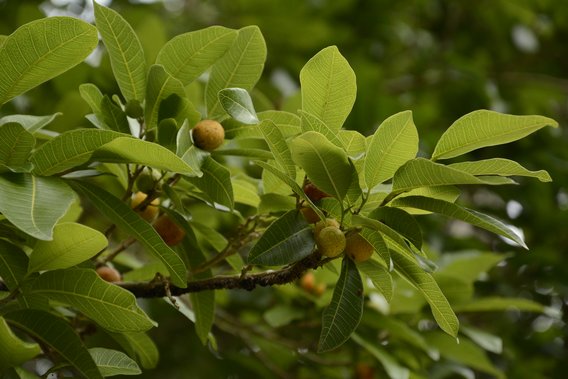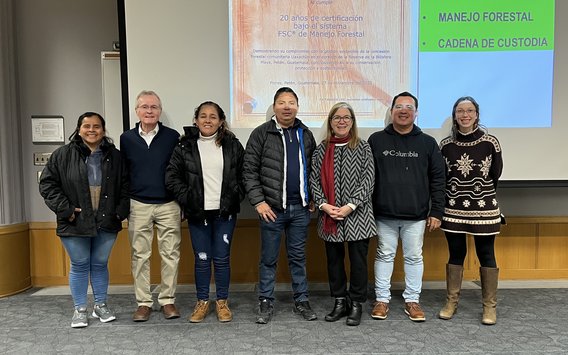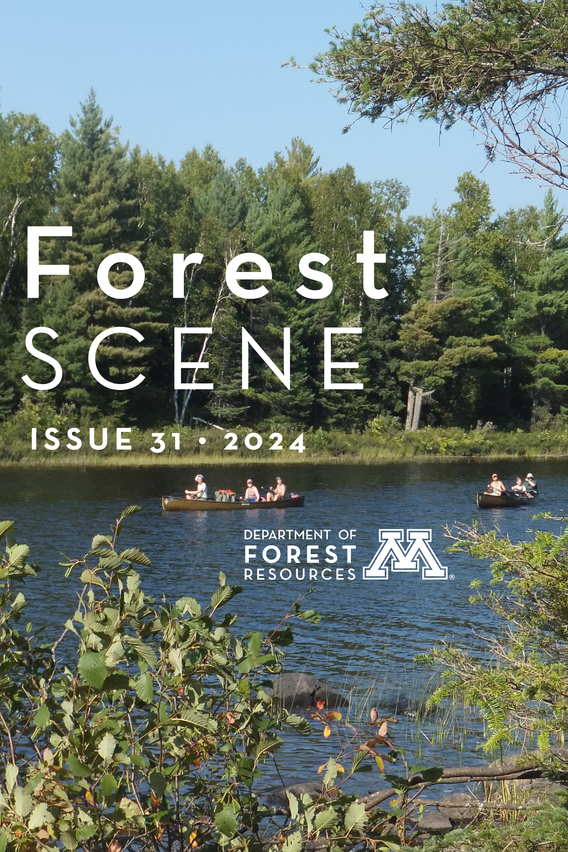This article is part of the Forest Scene newsletter, Issue 31.

The Center for Integrated Natural Resources and Agricultural Management (CINRAM) collaborates closely with agroforestry communities around the world. Founded in 1996 to bridge the gap between natural resource sciences and agriculture through agroforestry, CINRAM is currently led by Forest Resources Researcher Dr. Dean Current. Through its interdisciplinary, international collaborations, CINRAM conducts applied research on the financial impacts of agroforestry and land use practices. It aims to nurture profitable businesses, thriving communities, and a healthy environment simultaneously. The work brings the CINRAM team around the world in order to collaborate with agroforestry communities and businesses.
Sometimes the work brings CINRAM’s partners to the Twin Cities, too, where the UMN Forest Resources community has a chance to connect with them.
On a chilly evening in January 2024, members of the Uaxactun community forest concession, who collaborate with CINRAM, visited Green Hall to give a Spanish/English presentation on their work. Located in the Maya Biosphere Reserve in Northern Guatemala, a 2.1 million-hectare reserve and the largest remaining natural forest block in Central America, the village has an agreement with the government to sustainably care for an area of the land, where they also sustainably harvest both timber and non-timber products. After close to 25 years of following this agreement, they’ve accomplished and learned a lot. The group traveled to the Twin Cities to share their experience, recruit support, and network with potential new partners through CINRAM. Through the stories they shared, they also highlighted the positive impact sustainable, community-led forestry/agroforestry has had on both people and the environment. With similar community-led forest management projects occurring both close by and afar, their experiences provided lessons with broader applications, too.
Community forest concessions
Since 1998, the community forest concession program has allowed the Guatemalan government to lease large blocks of government forests to communities for 25-year periods. The program was initially set up to conserve protected lands from harmful development and land use practices. As an incentive, communities that lease this land are permitted to harvest timber and non-timber forest products, such as palm fronds and tree nuts, if they follow a sustainable management plan that’s both approved by the National Council for Protected Areas and certified as sustainable by the Forest Stewardship Council.
The result? In these areas, communities have brought down deforestation rates and protected the lands they manage from fire and conversion to agriculture. Plus, through selling forest products, they’ve been able to sustain themselves, provide leadership opportunities for community members, particularly women, and education and job opportunities for younger generations – helping to keep their community tied to land that’s of cultural significance to them.
Strong partnerships

Much of CINRAM’s research responds to sustainable natural resource issues and opportunities identified by its partners. Currently, CINRAM is developing markets for the seed of the Ramón tree (Brosimum alicastrum), which can be ground down and used as a flour supplement, a caffeine-free coffee alternative, and even beer flavoring. The work requires a range of research, including basic biological research on the productive capacity of the tree and such cross-disciplinary research as measuring the impact of climate change, investigating the development of new products for the market, and evaluating the financial viability of the seed harvest to support local community enterprises.
Such projects attract a diverse array of UMN graduate students – both from the Natural Resource and Science Management (NRSM) program and the Humphrey School of Public Affairs Masters of Development Practice program – who pursue a wide variety of research opportunities. [Read current NRSM graduate student Luiza Lucena's research summary.]
“Landscape-level issues and opportunities are complex and require an interdisciplinary approach,” explains Current. “CINRAM’s partnerships are important because they bring together researchers from the University with natural resource professionals, practitioners, and organizations that are much closer to the social, economic, and environmental issues playing out with farmers and communities on the landscape.”
New connections
After members of the Uaxactun community forest concession finished their presentation, UMN students quickly gathered around them. Chatter in both Spanish and English erupted across the room as people exchanged names, emails, stories, and ideas. The presentation was informative, but now the real work was beginning: new relationships and potential research partnerships started to take shape.

The Forest Scene newsletter is published biannually in the spring and fall, featuring stories and updates from the Department of Forest Resources. Read Issue 31 (2024):
